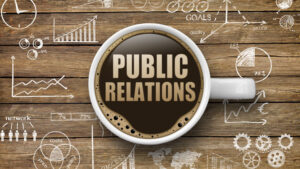 Looking back on the past six months, I’ve come to the conclusion that I’ve learned more about public relations during the time than any other period in my professional life. Here are ten things I’ve learned about public relations in the last half of the year.
Looking back on the past six months, I’ve come to the conclusion that I’ve learned more about public relations during the time than any other period in my professional life. Here are ten things I’ve learned about public relations in the last half of the year.
1. If You Let Them, Journalists Will Take Advantage of You
Public relations consultants are supposed to be nice and helpful, but to what extent? Sometimes I spend up to an hour flapping my gums with no publicity in return. That’s fine. However, when it happens time and again with the same journalist, the relationship must end. What’s worse is when a journalist wants the public relations consultant to more or less write the article.
2. Build a Vocabulary
Flipping through my press clippings from the first half of the year, a number of words and phrases appeared in multiple articles. Not a problem–if these were key messages. As an “expert” speaking to the media about a variety of subjects, I need to improve my vocabulary.
3. Fact-Check Your Own Research
In my rush to help with a story, and get my company some publicity, I sent a journalist some sloppy research. A co-worker caught the mistake, and I was able to get in touch with the journalist before the story hit print. There’s nothing worse than being the reason for a correction; erroneous information can ruin a relationship with a journalist.
4. Saying “I Don’t Know” Works Fine
As sources, public relations consultants can’t know everything. It’s better simply to admit as much instead of trying to talk your way around a subject. My new favorite response these days is “I’m sorry, I’m not familiar with…”
5. Don’t Speak if You’re Not Comfortable With the Subject
I got a call a few weeks back from a journalist overseas who wanted to talk about an Eastern European telecommunications company. I know enough about the subject to impress someone in a New York bar, but I politely (and wisely) declined to discuss the subject with a Czech newspaper.
6. Brand-Building Matters
I sometimes wonder whether the publicity my company receives does any good. Even an effective public relations strategy doesn’t always immediately translate into sales. My company has a long sales cycle, where it takes weeks, if not months, to close a deal. Thankfully, my sales guys communicate on a regular basis, and the feedback I’ve been getting from them has helped me realize that my public relations work is bleeding to the bottom line.
7. Public Relations Brings Credibility
My company recently secured a deal to get our content distributed through a major portal. Considering we’re essentially in the content generation business, this is a huge deal for us. One of our big selling points was the amount of media exposure we’ve gotten over the past few years. Our press kit, which was included in the partnership proposal, helped our partners realize that independent third parties respect our work.
8. Quantity Helps
The quality of your public relations strategy is obviously more important than the quantity of press clippings. A mention on “The Today Show,” on “Oprah” or in the New York Times can be more valuable than 100 press clippings from smaller venues. Still, racking up a lot of publicity can help, specifically with brand-building. Half-way through this year my company had scored more than 150 press mentions on radio, on television, in print, or on corporate-owned media web sites (not including blogs). And the publicity we received denied our competitors exposure.
9. Smart Companies Use Blogs Effectively
General Motors has been taking a beating on a number of fronts over the past few years, but the company scored some serious points when it took on the New York Times and its star columnist, Thomas Friedman. Suggesting that GM supports terrorists and pays off politicians, Friedman called GM a corporate “crack dealer” and said the company’s existence poses a threat to America’s future. GM responded with a letter to the editor, which the Times wanted to print in an edited version, removing the word “rubbish,” which GM used to describe Friedman’s assertions.
The letter never got printed, but GM went on the offensive. The company used its FYI Blog to publish the correspondence from its public relations department to the Times; GM also published its own letter without edit. GM kept the pressure up with subsequent blog posts after Friedman ran his own follow-up column. The media eventually latched onto the story, with GM coming off like the little guy.
10. Teach Your Co-Workers how to Deal with the Media
A year ago, I was only person in my company who regularly dealt with the media. Now, my company has three or four other people who are quite adept at handling the media. All it took was some words of advice and encouragement. For me, the payoff has been more time to concentrate on my other duties, and more publicity for the company thanks to multiple opportunities for quotes.
This article, written by Ben Silverman, originally appeared in PR Fuel (https://www.ereleases.com/prfuel), a free weekly newsletter from eReleases (https://www.ereleases.com), the online leader in affordable press release distribution. To subscribe to PR Fuel, visit: https://www.ereleases.com/prfuel/subscribe/.
